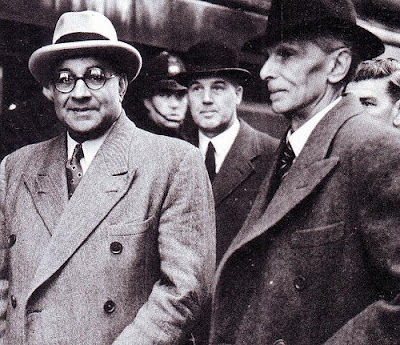The founding of Pakistan by Quaid-i-Azam Mohammad Ali Jinnah so greatly dominates his political life and career that his other roles are bound to be ignored. One important role which Jinnah played in the politics of India was for the achievement of unity between the Hindus and Muslims by bringing about some understanding between the Indian National Congress and the All India Muslim League. In fact, for more than two decades Jinnah was known more for this role than for any other. It will be recalled that Gopal Krishna Gokhale expressed the view that Jinnah “has true stuff in him and that freedom from all sectarian prejudice which will make him the best ambassador of Hindu-Muslim unity.”1 Mrs. Sarojini Naidu, who compiled Jinnah’s speeches and writings in 1918 gave the volume the sub-title An Ambassador of Unity and wrote that Jinnah stood “approved and confirmed by his countrymen not merely as an ambassador, but as an embodied symbol of Hindu-Muslim unity.”2 Similarly, Jawahar Lal Nehru, who strongly differed from Jinnah on several political issues, wrote in 1936 that Jinnah had been “largely responsible in the past for bringing the Moslem League nearer to the Congress.”3 The fact is that Jinnah continued to work for unity between the Hindus and Muslims until he was convinced early in 1940 that the Hindu leaders were not at all prepared for any kind of understanding. The purpose of this paper is to discuss this aspect of Jinnah’s political life.
Showing posts with label Muhammad Ali Jinnah. Show all posts
Showing posts with label Muhammad Ali Jinnah. Show all posts
Statues of Fatima Jinnah and Quaid-e-Azam at the National Heritage Museum, Islamabad
Quaid-i-Azam: Kashmir The “Jugular Vein of Pakistan.”
By Dr Raja Muhammad Khan
 |
| Quaid-e-Azam in Kashmir |
 |
| Quaid-e-Azam, Fatima Jinnah and the Liaquats in Kashmir |
Quaid-e-Azam and Liaquat Ali Khan - Was the prime minister conniving against the Governor General?
While Liaquat Ali Khan is generally regarded as Jinnah's right hand man, this may not be entirely true. Dr Hamida Khuhro's biography of her father reveals that Jinnah told Mr Khuhro "The prime minister (Liaquat) is average while the remaining cabinet is below average". They are believed to have differning opinions on the issue of minorities.
When Mr Jinnah was convalescing in Ziarat, only 2-3 weeks from his death, Liaquat Ali Khan and Chaudhry Muhammed Ali arrived unannounced one evening. "Do you know why they have come" Jinnah asked his sister and dismissing one of her theories replied "They have come to see whether I will live or die". Shortly after the visit Mr Jinnah told his physician that it did not matter whether he lived or died.
When Mr Jinnah arrived in Karachi on the last day of his life (11 September 1948), an ambulance sent to him wihout fuel, which hastened his end. The Prime Minister had been adivsed by the Military Secretary of the Governor General not to come to the aerodrome. Indeed the Prime Minister reached the Governor General's house after his soul had departed his frail body. Two pages from Miss Fatima Jinnah's book 'My Brother' were censored out while his physician's book was proscribed in 1948 only to be released in 1976 on Mr Jinah's birth centenary. Here the two are seen easing their tension through nicotine.
Credit: Dr Ghulam Nabi Kazi
The Partition Agreement is reached - 3rd June, 1947
Clockwise from left: Abdur Rab Nishtar, Baldev Singh, Acharya Kirpalani, Vallabhai Patel, Jawaharlal Nehru, Louis Mountbatten, Mohammed Ali jinnah, and Liaquat Ali Khan. The butcher of Gurdaspur Lord Ismay is seated at the back.
Subscribe to:
Comments (Atom)
Gandhi and Jinnah - a study in contrasts
An extract from the book that riled India's Bharatiya Janata Party and led to the expulsion of its author Jaswant Singh, one of the foun...

-
Few individuals significantly alter the course of history. Fewer still modify the map of the world. Hardly anyone can be credited with creat...
-
We are starting with this fundamental principle that we are all citizens and equal citizens of one State. ( Presidential Address to the Co...






















